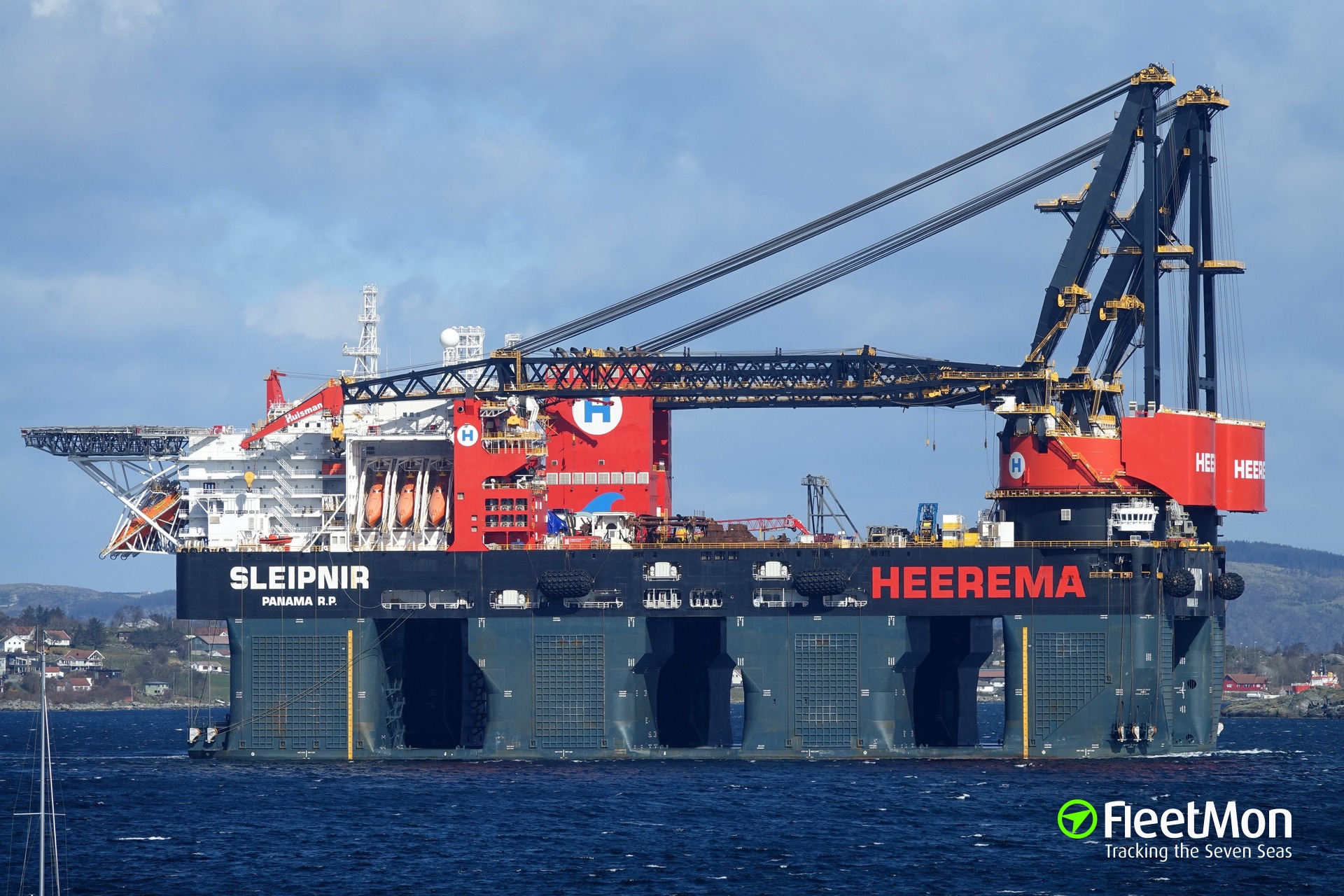


these studies, performed years ago, did not account on the possibility to perform such transit situations since it has a transit draught of 12m and this one only has been considered at detailed design stage. in order to do the calculations for this project, data from the preconstruction studies has been analyzed and cross checked with the speed trials. the scope of doing this study is for the company to know how much time will be spending on sailing for different weather and cargo conditions of the vessel, and therefore to be able to predict the timing better. unlike other sscv, sleipnir has been designed so as it can sail by own propulsion so before this craft starts working on future projects, hmc desires to be able of predicting the different speeds that it will get for different scenarios of draught, waves and wind, when transporting a cargo while being suspended. the objective of this thesis will be to give a prediction of the total resistance and the speed of the new vessel sleipnir at different scenarios. it is therefore of interest to know how will the crane vessels respond to this situation, as regards to motions and available speed. The vessel SLEIPNIR (IMO: 9781425, MMSI 374887000) was built in 2019 (3 years old) and is currently sailing under the flag of Panama. The vessel is en route to the port of Xiamen and expected to arrive there on Jul 3, 5 PM. however, nowadays it is becoming a possibility to transport a cargo (jacket, or topsides) while being suspended on the cranes. Measuring 220 metres (722 ft) in length and 102 metres (334 ft) in width, Sleipnir is the largest offshore vessel Sembcorp Marine has built, to date. The current position of SLEIPNIR is at coordinates 54.2662 N / 2.32253 E, reported 22 minutes ago by AIS. during transits and operations, cargo and equipment are fitted on deck of sscvs or on a barge, if it does not fit. recently, the new vessel, sleipnir, has been built in order to overcome the next generation challenges of the sector, being able to lift 20.000tn with its two cranes. sscvs are characterized by two floaters with three or four columns on each floater supporting a single body upper hull structure. The 17,000-ton process module installation is said to be the world’s heaviest crane lift undertaken at sea. for this purpose, hmc operates four crane vessels of which three are semi-submersibles (sscv). The vessel SLEIPNIR (IMO: 6513920 ) is a Fishing Vessel built in 1964 (56 years old) and currently sailing under the flag of Unknown. Offshore staff ESBJERG, Denmark Heerema Marine Contractors’ crane-lift vessel Sleipnir has set down the final topside on a pre-installed jacket at the Tyra gas field in the Danish North Sea. Heerema says the ship’s Dynamic Positioning system performed even better than expected, keeping Sleipnir within the footprint of just 12 by 12 inches during work.

Sleipnir’s speed was also tested, achieving a top speed of 12.2 knots.
#Sleipnir vessel install#
they transport, install and remove all types of fixed and floating structures. Sleipnir is also the world’s first crane vessel with dual-fuel engines capable of running on traditional MGO and LNG.


 0 kommentar(er)
0 kommentar(er)
